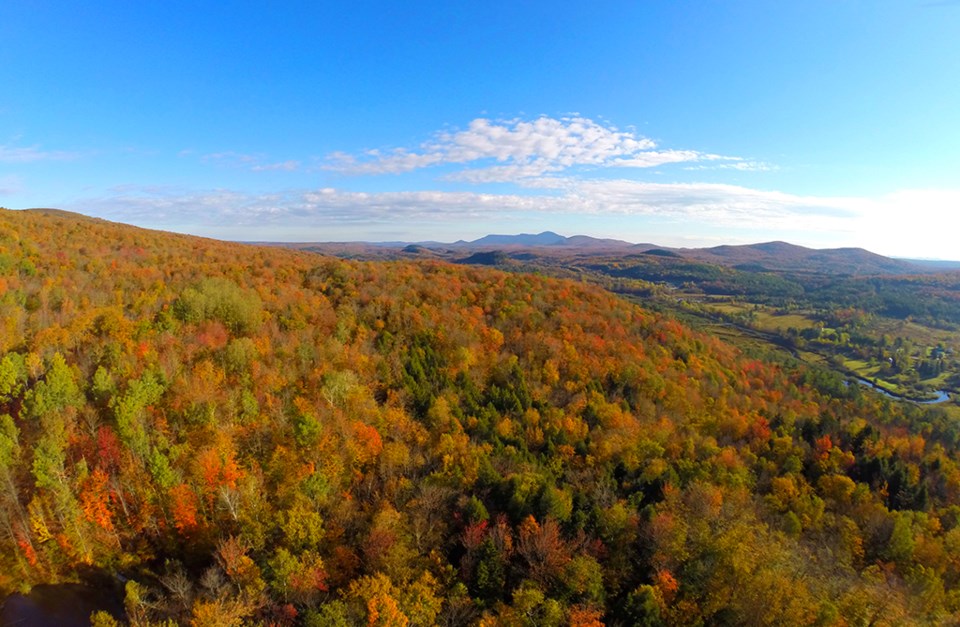As we mark National Forest Week, let’s consider what our forests provide. The short answer is, much more than we realize.
Even if you don’t live in or near a forest, we all benefit from them, and we cannot live without those benefits.
Saskatchewan’s forests are integral to mitigating the impacts of climate change, providing habitat for wildlife and offering a place for recreation. Saskatchewan’s forests are rich and vibrant habitats for many rare species. For example, the Cypress Uplands habitats range from fescue prairie to lodgepole pine forest with bench-like plateaus, forested slopes and steep cliffs. This area is home to the highest diversity of bird species in Saskatchewan.
Our Boreal Transition area supports tall stands of aspen and white spruce that are home to white-tailed deer, moose, elk, black bear and many birds including the Canada warbler, olive-sided flycatcher, black and white warbler and boreal chickadee.
Forests define our Canadian geography and identity. One-third of our country is covered with trees. Jobs in forestry employ more than 200,000 Canadians and support many Indigenous and northern communities. And yet across the country woodlands are being squeezed by development, climate change and demand, all at a time when we are asking trees to help save us from the crisis of climate change.
In western Canada, many forests continue to support a diversity of large mammals, but those outside of the network of protected areas are impacted by land-use pressures. The annual rate of deforestation from agriculture in the boreal transition zone in Saskatchewan between 1966 and 1994 was approximately three times the world average.
With our supporters, the Nature Conservancy of Canada aims to protect some of the country’s best remaining habitats, including forests. We are focused on ensuring Canada’s exceptional forests are restored, sustained and protected so that we can continue to enjoy the powerful benefits they provide. As part of the United Nations International Decade on Ecological Restoration, individual citizens across the country have a critical role to play by supporting forest conservation efforts and planting trees in appropriate locations. You see, when nature thrives, we all thrive.
Since 1962, NCC has worked with landowners, farmers, communities, corporations, governments and generous financial donors to protect private forests through local conservation projects via land purchases, land donations and conservation agreements. The conservation organization also plants trees as part of river or streambank restoration, and conducts many reforestation projects across the country.
NCC acknowledges Indigenous communities for their leadership, contributions and stewardship through generations and appreciates working with them and other conservation partners. We can all learn from each other and do more to ensure our protected areas are connected with wildlife corridors, that the health of our streams and rivers are improved by forest buffers and that important habitats for wildlife are maintained.
Conservation organizations like NCC are protecting thousands of hectares of forest coast to coast to support Canada’s goal of conserving 30 per cent of our lands and waters by 2030. There is space for everyone to contribute, through spending time in local forests, learning how to conserve the forests we all love and supporting organizations that work every day to restore forests in our communities.
To do more for Canada’s forests, NCC is launching a first of its kind Nature + Climate Projects Accelerator for Canada. It will be a source of projects ranging from new forms of land partnerships to investment approaches and tools designed to attract private capital, in order to combat rapid habitat loss and climate change.
Canada’s corporations and individuals have a major role to play in forest conservation as governments cannot do it alone. Investing in nature-based solutions means protecting and restoring the forests and peatlands that absorb carbon, and the natural areas that protect communities from disease, flood, fire and other impacts of climate change. From the food on our tables to our health and well-being, nature provides a myriad of essential, and largely undervalued, services.
Matthew Braun is Manager of Conservation and Science Planning for the Saskatchewan Region with the Nature Conservancy of Canada.




